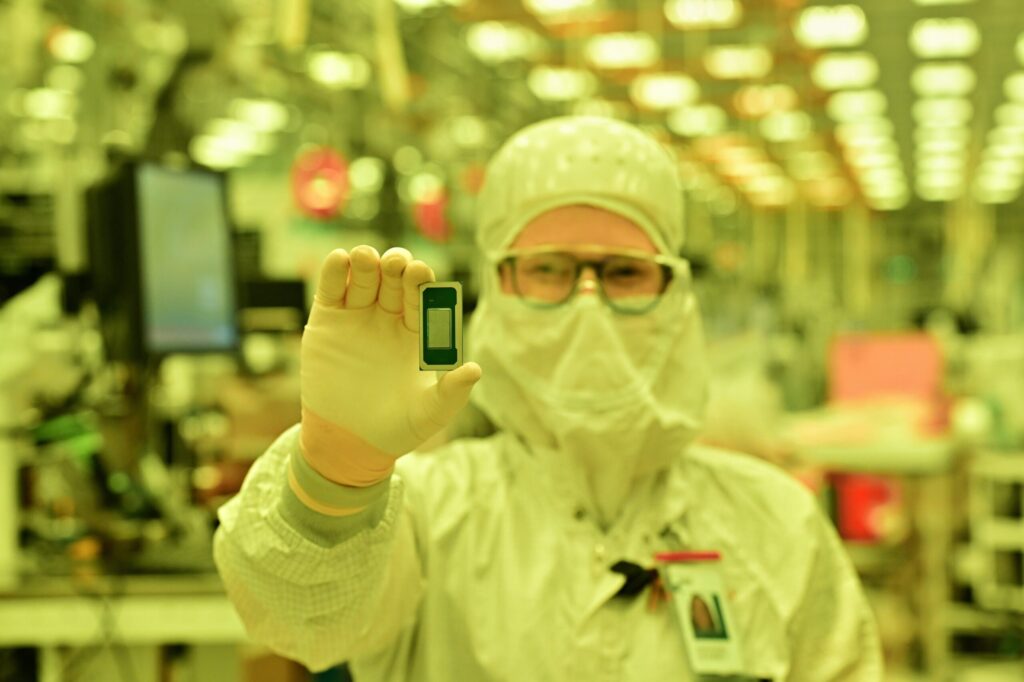
Intel has commenced mass production of the world’s most advanced computer chips at its newly inaugurated Fab 52 facility in Arizona. This significant development marks a pivotal step in the U.S. company’s strategic initiative to reclaim leadership in the global semiconductor industry.
The cutting-edge ‘Panther Lake’ processors, crafted using Intel’s revolutionary 18A (1.8-nanometre) technology, are set to power the next generation of AI-driven laptops, robotics systems, and industrial devices. Shipments are scheduled to begin in late 2025, with consumer products expected to enter the market early the following year.
Technological Breakthroughs with 18A Process
The 18A process signifies Intel’s most substantial technological advancement in over a decade. It incorporates the PowerVia backside power delivery system and the innovative RibbonFET transistor design to enhance both efficiency and performance. This breakthrough is expected to propel Intel ahead in the race for semiconductor supremacy.
The Panther Lake architecture integrates CPU, GPU, and connectivity “tiles” into a single, modular chip platform optimized for AI workloads. Some of these components are being developed in collaboration with Taiwan Semiconductor Manufacturing Company (TSMC), showcasing Intel’s strategic partnerships to bolster its technological capabilities.
Future Prospects: Clearwater Forest Server Processors
In addition to the Panther Lake processors, Intel has unveiled details of its forthcoming Clearwater Forest server processors, also built on the 18A node. Scheduled for release in 2026, the Xeon 6+ lineup promises substantial performance-per-watt improvements for data centers, with Intel asserting up to 70% reductions in floor space requirements.
“This launch heralds an exciting new era for computing,” said Intel CEO Lip-Bu Tan. He further noted that the ramp-up of Fab 52 “cements America’s role in advanced chip manufacturing.”
Strategic Investments and Government Support
Intel’s presence in Arizona dates back to 1979, and the company has invested over US$100 billion (A$150 billion) in expanding its U.S. manufacturing capabilities. This move is part of a broader strategy to enhance domestic chip production, bolstered by significant investments from the U.S. government, which now holds a 10% stake in Intel.
The U.S. government’s financial backing is part of a concerted effort to rebuild the nation’s chipmaking industry, a sector deemed critical for national security and technological independence. Intel has also garnered support from industry giants Nvidia and SoftBank, further solidifying its position in the market.
Competitive Landscape and Industry Implications
The announcement comes as competitors TSMC and Samsung are racing to bring their own 2-nm technologies online. This competitive landscape underscores the rapid pace of innovation in the semiconductor industry, with companies vying for technological superiority and market share.
Industry analysts suggest that Intel’s advancements could have far-reaching implications, potentially reshaping the global semiconductor market. The integration of AI capabilities in consumer and industrial devices is expected to drive demand for more advanced chips, positioning Intel favorably for future growth.
According to market experts, “Intel’s strategic investments and technological breakthroughs could redefine the semiconductor landscape, positioning the company as a leader in the next wave of computing innovation.”
As Intel continues to push the boundaries of chip technology, the industry will be closely watching how these developments influence market dynamics and technological trends in the coming years.






